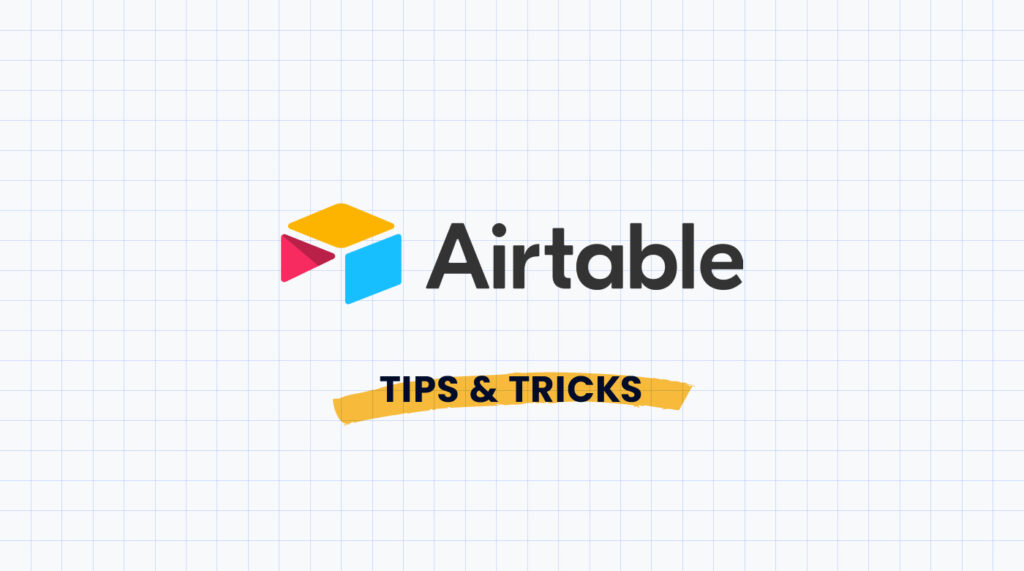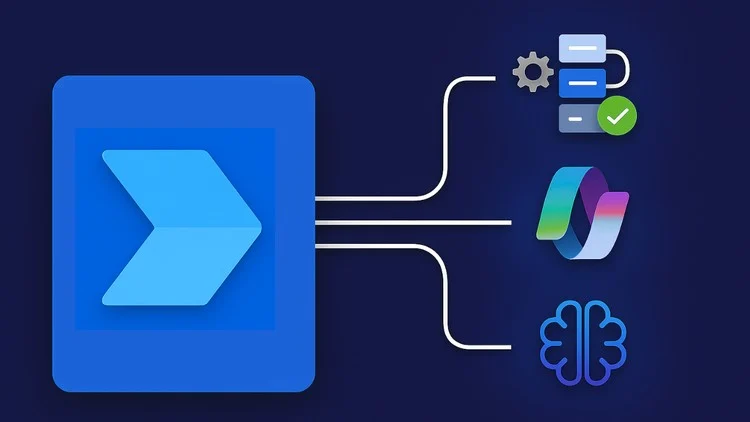
The AI Revolution Meets Recurring Revenue: Why Subscriptions are Key for AI SaaS
Decoding AI SaaS: Beyond Just Software and Algorithms
AI SaaS transcends basic software or intricate algorithms; it’s fundamentally about delivering intelligent, adaptive solutions that actively learn and evolve. These tools go beyond providing fixed features, offering a dynamic service that continuously refines its capabilities. Consider platforms like Grammarly’s sophisticated AI writing assistant or CRM systems leveraging AI for predictive sales analytics. They aren’t merely selling lines of code; they’re selling an ever-improving capability to solve complex problems, enhance productivity, and drive better outcomes. “Users aren’t just buying a product; they’re investing in an ongoing, intelligent partnership.”
This inherent and continuous evolution is a crucial differentiator. Unlike conventional software, AI-powered SaaS products refine their performance through data ingestion, algorithm optimization, and user interaction. They provide increasingly accurate insights, automate tasks more effectively, and offer more powerful capabilities over time. “This perpetual advancement creates an undeniable, compounding long-term value for every subscriber.” Consequently, subscription models are not just convenient; they are the most logical way to monetize. Customers willingly pay for sustained access to a dynamic resource that consistently gets smarter, more efficient, and more valuable, ensuring they always benefit from the latest innovations.
The Irresistible Pull of Subscription Models for AI Tools
The subscription model offers an undeniable appeal for AI SaaS tools. It delivers a steady flow of recurring revenue. This predictable income is vital. It funds the extensive research and development needed to keep AI models cutting-edge and competitive. “Subscriptions ensure your AI solution continuously adapts and improves, offering ever-increasing value to your customers over time.” This ongoing evolution is crucial in the fast-paced world of artificial intelligence, where innovation is constant.
For users, subscribing to AI SaaS tools means constant access to the latest advancements without large, unpredictable upfront costs. They regularly benefit from new features and updates. Performance also improves as the underlying AI technology rapidly matures. “This ongoing value proposition strengthens customer loyalty and significantly reduces churn.” For businesses monetizing your AI SaaS with subscriptions, it fosters a long-term partnership. This is built on mutual growth and continuous innovation, transforming a simple transaction into an evolving, indispensable service.
E-E-A-T in Practice: Building Trust and Authority with Your AI Offering
In the dynamic world of artificial intelligence, building user trust is absolutely essential. Your AI SaaS tools demand a strong foundation of E-E-A-T (Experience, Expertise, Authoritativeness, Trustworthiness). Users need to know your solution delivers real value, not just promises. Demonstrate your Experience with clear success stories, user testimonials, and relevant case studies. Show your Expertise by openly explaining how your AI works, its unique differentiators, and its specific, tangible benefits. “This transparency is key to establishing initial credibility with potential customers and proving your AI is more than just hype.”
Authoritativeness grows from consistently delivering value and positioning your brand as a thought leader in your specific AI niche. Prove your AI SaaS is reliable through transparent data handling, robust security protocols, and ethical AI development practices. Earn Trustworthiness by providing exceptional, responsive customer support and being accountable for your product’s performance. A well-designed subscription model inherently supports this. It requires continuous innovation and a deep commitment to long-term customer success and satisfaction. “By consistently delivering on your promises and evolving with your users’ needs, you transform them into loyal advocates, significantly reinforcing your market position.”
Laying the Foundation: Understanding Your AI Product and Audience

Identifying Your Unique AI Value Proposition (UAVP): What Makes You Special?
Your Unique AI Value Proposition (UAVP) defines what makes your AI SaaS tool truly special. It’s more than just having an AI. Instead, it’s about *how* your AI solves a problem better or differently. “Identifying your UAVP is paramount for monetizing your AI SaaS tools effectively.” In today’s crowded market, a clear UAVP helps you stand out. It also justifies your pricing and value.
To pinpoint your UAVP, consider your AI’s core strength. Does it offer unrivaled accuracy, like an AI diagnostic tool surpassing human error rates in radiology? Is it uniquely simple to use, streamlining complex tasks for non-technical users? Perhaps your AI serves a highly underserved niche, providing deep insights for a specific industry. For example, an AI specializing in predictive maintenance for offshore wind turbines has a stronger UAVP than a general analytics tool. This clarity is essential for attracting and retaining subscribers within subscription models.
Who Are You Serving? Pinpointing Your Ideal Customer Profile
Before considering subscription models for your AI SaaS, you must precisely define your Ideal Customer Profile (ICP). Trying to appeal to everyone effectively means appealing to no one, diluting your efforts and resources. “Without a sharp focus on your target user, attempts to monetize your AI SaaS tools become inefficient and unfocused.” A clear ICP guides every decision, ensuring your solutions address real problems for a select group, making your value proposition compelling and clear.
Pinpointing your ICP extends beyond basic demographics like industry or company size. Crucially, identify their most pressing pain points that your AI solution alleviates. For instance, are you targeting small e-commerce businesses struggling with inventory management, or large financial institutions needing fraud detection? Understanding these nuances directly informs product design and helps determine the optimal pricing and packaging for your subscription tiers.
Market Research: What Are Competitors Doing (and Missing) in AI Monetization?
Start by deeply examining your competitors‘ existing AI monetization strategies. Look closely at how successful AI SaaS tools set their prices. You will often see tiered subscription models. These plans usually consider feature access, user seats, or usage limits. For example, AI content tools or image generators often charge by word count, image credits, or advanced access. “Understanding their successful approaches creates a crucial benchmark for your own AI SaaS subscription models.” It shows what customers expect to pay. Analyze not just *what* they charge for, but *how* they bundle that value.
However, market research is more than just copying others. It is about finding new ideas. Your real advantage comes from seeing what competitors miss in their current AI monetization. Search for problems they do not solve or customers they ignore. Look for rigid pricing that does not fit user needs. Perhaps they do not offer a free plan. Or maybe their usage pricing harms loyal users. “Identifying these gaps gives your AI SaaS tools a clear way to stand out.” This helps you create unique, appealing subscription models. Such analysis builds your special place in the market.
Crafting Your Subscription Magic: Pricing Models and Tiers That Convert
Choosing the Right Pricing Model: Freemium, Tiered, Usage-Based, or Per-Seat?
Choosing the right pricing model is a critical first step for monetizing your AI SaaS. Many find success with Freemium, offering a free basic version to hook users and showcase your AI’s value, like a free grammar checker with premium features. “This strategy builds trust and allows users to experience your tool firsthand before committing financially.” Alternatively, a tiered pricing model presents different levels of features or usage limits, catering to diverse customer needs and budgets, such as varying data analysis capacities for an AI analytics tool.
For AI solutions where usage fluctuates, usage-based pricing is often ideal; customers pay only for the resources they consume, like API requests or compute time. This model is transparent and scales directly with value delivered, perfect for AI content generation that charges per article. In contrast, a per-seat model fits well for collaborative AI tools used by teams, such as AI-powered design software. “It simplifies budgeting for businesses and encourages wider adoption within organizations as they grow.” Ultimately, aligning your chosen model with your AI’s unique value proposition ensures fair pricing and strong revenue.
Building Compelling Subscription Tiers: Balancing Value and Price
Building compelling subscription tiers is vital for your AI SaaS tools to reach a wide audience. Each tier, from ‘Basic’ to ‘Enterprise,’ needs a clear value proposition. You must differentiate features, usage limits, or support levels. This matches varied customer needs and budgets effectively. Think about your users: some need simple automation. Others require advanced analytics and dedicated support. “Effective tiers ensure every potential user finds a plan that truly fits their needs.” This maximizes your monetization potential and helps in unlocking profits.
The real skill is balancing the perceived value against each tier’s price. Your entry-level option should offer enough core functionality to be genuinely useful. However, it must also encourage upgrades for more advanced capabilities. Higher tiers must deliver significantly more benefits. These benefits should justify their increased cost. For example, a ‘Pro’ plan might include more API calls or custom reporting. This contrasts with a ‘Basic’ plan. This strategic differentiation is key to a sustainable subscription model. It ensures customers clearly see benefits when moving up.
Strategizing Feature Gatekeeping and Upsell Opportunities for AI Services
For your AI SaaS, thoughtful feature gatekeeping is essential. Begin with a free or entry-level tier offering core AI functionalities, like basic data analysis or initial content generation. Reserve more powerful, advanced AI features for higher-priced subscriptions. Think about gated access to customizable AI models, significantly higher API call limits, or specialized, niche-specific algorithms. This includes premium features like advanced predictive analytics, real-time sentiment analysis, or enterprise-grade security. “By strategically placing high-value capabilities behind a paywall, you clearly define the premium experience.” This encourages users to explore and ultimately upgrade for deeper utility.
Seamlessly integrate upsell opportunities throughout the user journey. Monitor usage patterns for natural upgrade triggers. For instance, if a user consistently approaches their monthly AI processing limits or requires more storage, prompt them with a clear, benefit-oriented upgrade offer. Introduce premium add-ons such as dedicated expert support, bespoke AI model training sessions, or integrations with popular business platforms. Emphasize the tangible return on investment of higher tiers. “Proactive, value-driven communication is key to transforming satisfied users into long-term, high-value subscribers.” This approach maximizes your AI monetization strategy, moving customers through your subscription models.
Beyond the Sign-Up: Driving Growth and Nurturing Loyalty in AI SaaS
Onboarding Excellence: Making First Impressions Count with AI Tools
When users first engage with your AI SaaS tools, their initial experience defines their perception and future engagement. Onboarding excellence isn’t just a nicety; it’s a critical component for reducing early churn and validating their decision to subscribe. Unlike conventional software, AI solutions can sometimes feel abstract or complex, making a guided, clear pathway to “aha!” moments indispensable. “A seamless first impression quickly transforms curiosity into competence, ensuring users rapidly understand and leverage your tool’s power.” This immediate value realization is essential for fostering user confidence and encouraging continued use of your subscription models.
To truly make first impressions count, design your onboarding to be intuitive and highly personalized. Implement interactive walkthroughs that highlight key AI features and demonstrate practical use cases relevant to the user’s role or industry. Leverage your own AI capabilities to offer tailored recommendations, guiding users to features most likely to solve their specific pain points. Provide clear, concise in-app support and a comprehensive, searchable knowledge base. “By making the path to proficiency effortless, you don’t just onboard users; you empower them, laying a strong foundation for long-term loyalty and sustained growth.”
Retaining Your Subscribers: The Power of Continuous Value & Support
Retaining your AI SaaS subscribers demands continuous evolution, not just initial brilliance. “You must consistently deliver new value to keep users engaged and prevent churn.” Regularly rolling out fresh features, boosting performance, and integrating cutting-edge AI capabilities are crucial. Consider how successful platforms frequently update their offerings. They adapt to user feedback and changing market demands. This ongoing innovation ensures your subscription remains essential, continually justifying its value to customers.
Beyond product enhancements, exceptional customer support is vital for long-term retention. Proactive communication, comprehensive documentation, and swift technical assistance build strong trust. “Making users feel heard, valued, and well-supported transforms them into loyal advocates.” Building a community where users can share tips and get help also fosters deeper engagement. Address issues quickly, provide useful resources, and actively solicit feedback. These human-centric efforts significantly boost customer loyalty, crucial for sustainable AI SaaS monetization.
Marketing Your AI SaaS: Reaching the Right People with the Right Message
Marketing your AI SaaS effectively begins with truly knowing your target audience. Who gains the most from your specialized tools? Pinpoint their specific pain points and business challenges. “Your message must clearly show how your AI solution solves these problems, offering efficiency or unique insights.” Focus on tangible benefits, not just features. For example, an AI tool for financial analysis should emphasize time savings and improved accuracy for financial teams. This precise focus helps you connect directly with potential users.
With a sharp message, select the right channels. Content marketing is powerful. Use blog posts and webinars to demonstrate your AI SaaS in action. This attracts users actively seeking solutions. SEO optimization ensures your tool ranks highly when prospects search. Also, explore strategic partnerships. Collaborate with industry influencers. Integrating with popular business software can also broaden your reach. Always showcase real-world success via case studies. This builds trust, proves your value proposition, and encourages adoption into your subscription models.
The Road Ahead: Measuring Success, Adapting, and Innovating Your AI Monetization
Key Metrics for AI SaaS Subscriptions: Beyond Just Monthly Recurring Revenue (MRR)
While Monthly Recurring Revenue (MRR) is crucial for immediate financial health, true success in AI SaaS subscriptions demands a broader view. “Focusing solely on MRR can hide underlying issues or opportunities.” You also need Annual Recurring Revenue (ARR) for long-term forecasting and investor relations. Even more vital is Customer Lifetime Value (CLTV). This metric shows the total revenue a customer generates over their entire relationship with your service. Understanding CLTV helps justify your investment in customer acquisition and retention efforts.
Beyond direct revenue, monitor metrics like Customer Acquisition Cost (CAC). Ensure your CLTV significantly outweighs CAC for sustainable growth. For AI tools, look at usage-based metrics such as API calls, data processed, or compute time consumed. These indicate active engagement and value derived. Also, track feature adoption rates to see if users leverage your advanced AI capabilities. “High adoption of key AI features confirms your product is delivering tangible user benefits and driving retention.” Regularly assessing these comprehensive metrics will paint a complete picture of your AI SaaS’s performance.
Iterating and Evolving: Using Feedback to Fuel Growth and Product Development
Your AI SaaS product’s journey doesn’t end after launch; it truly begins. Continuous feedback loops are essential for refining your subscription models and enhancing your offering. Gather insights from every touchpoint: customer support tickets, user surveys, and in-app usage analytics. These data points reveal what your subscribers love and where improvements are needed. For instance, companies like Slack constantly evolve their features based on user feedback, driving their strong retention and revenue. “Listening to your users is paramount for sustainable growth.” This deep understanding allows you to fine-tune features that directly impact customer satisfaction and perceived value.
Acting on this feedback fuels meaningful product development and strategic evolution. Implement changes, test new features, or even adjust your pricing tiers based on user insights. A/B testing different monetization strategies can help optimize conversions and retention. Consider how Netflix continuously refines its recommendation engine and content library through user data, directly impacting its immense subscriber base. “Agility in response to user needs ensures your AI tool remains competitive and highly valued.” This proactive approach ensures your AI monetization strategy stays robust, attracting and retaining subscribers over the long term.
The Future of AI SaaS Monetization: Trends and Technologies to Watch
The future of AI SaaS monetization is shifting. Expect highly dynamic and personalized models. We will see advanced adaptive pricing algorithms. These will use AI to optimize subscription costs in real-time. They will analyze market demand. Competitor pricing and user engagement will also be watched. “Your pricing could subtly adjust to maximize value for both you and your customers.” This moves beyond static tiers. Imagine a plan scaling with your AI’s actual business value. It won’t just track raw usage.
Further, value-based pricing will gain significant traction. This model charges customers based on tangible results. It focuses on the impact their AI tools provide. Consider examples. You might see “pay-per-insight” from an analytics AI. Or perhaps “pay-per-automated-task” for workflow optimization. This aligns customer costs with perceived benefits. It fosters stronger loyalty. Also, “AI-native” applications are rising. Here, AI is core to the product. New subscription frameworks will be needed. They will often combine usage-based elements with fixed fees. “Integrating AI’s unique capabilities into your pricing structure will be crucial for sustained growth and competitive advantage.”




